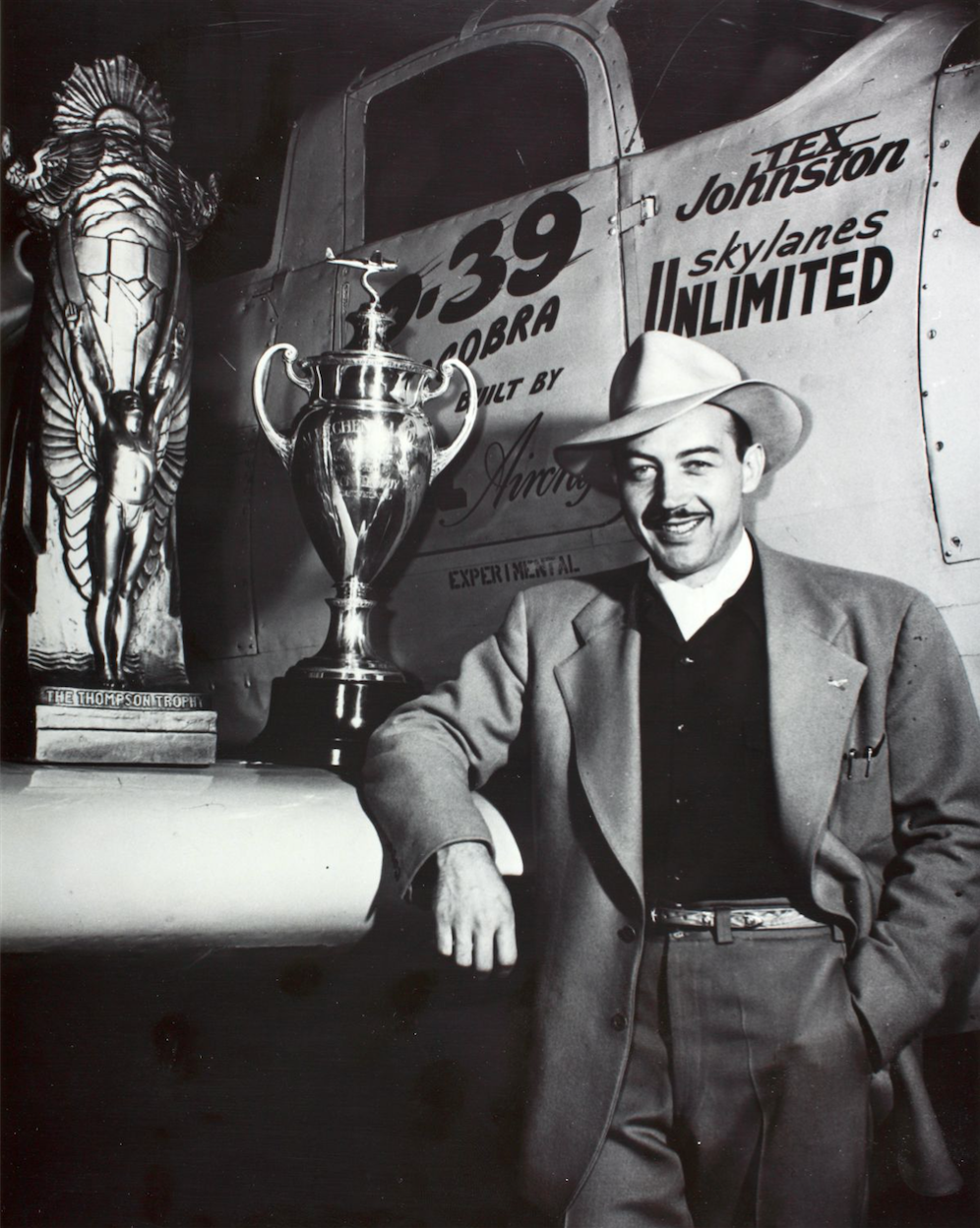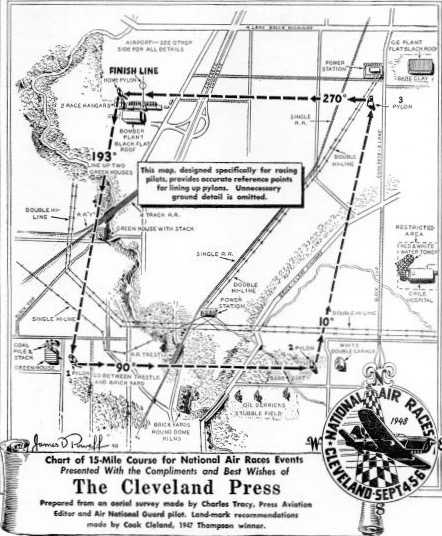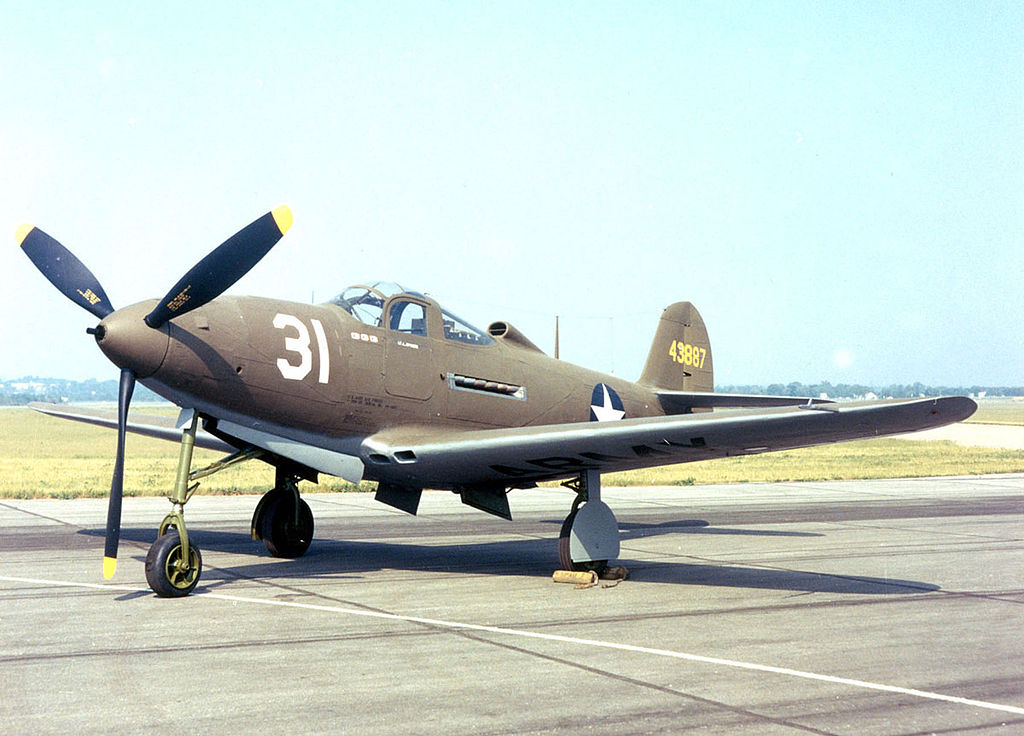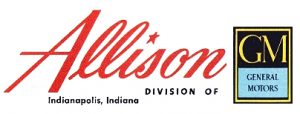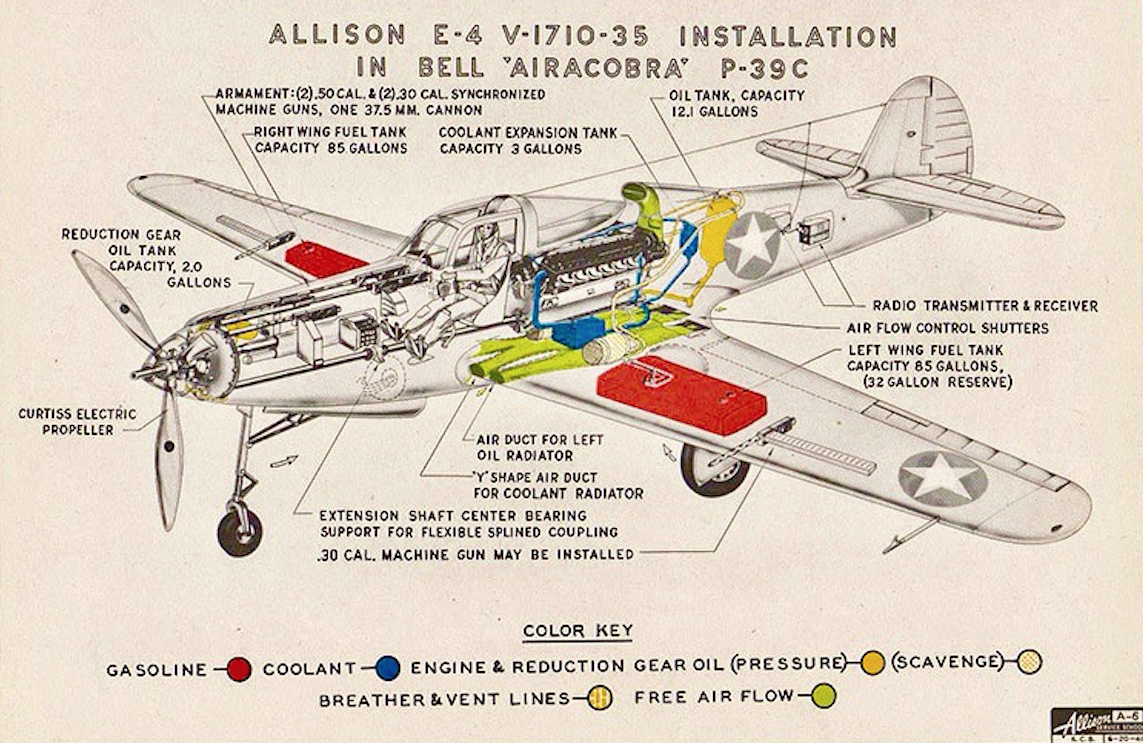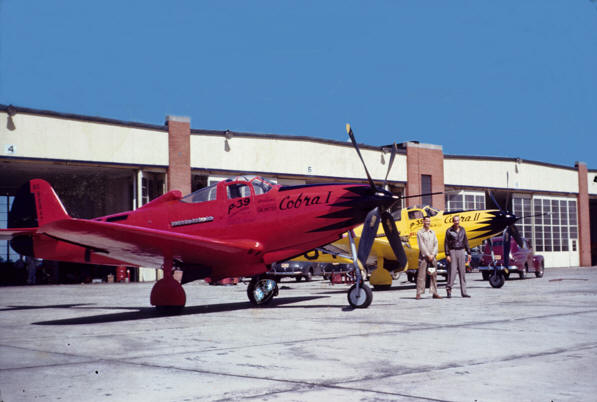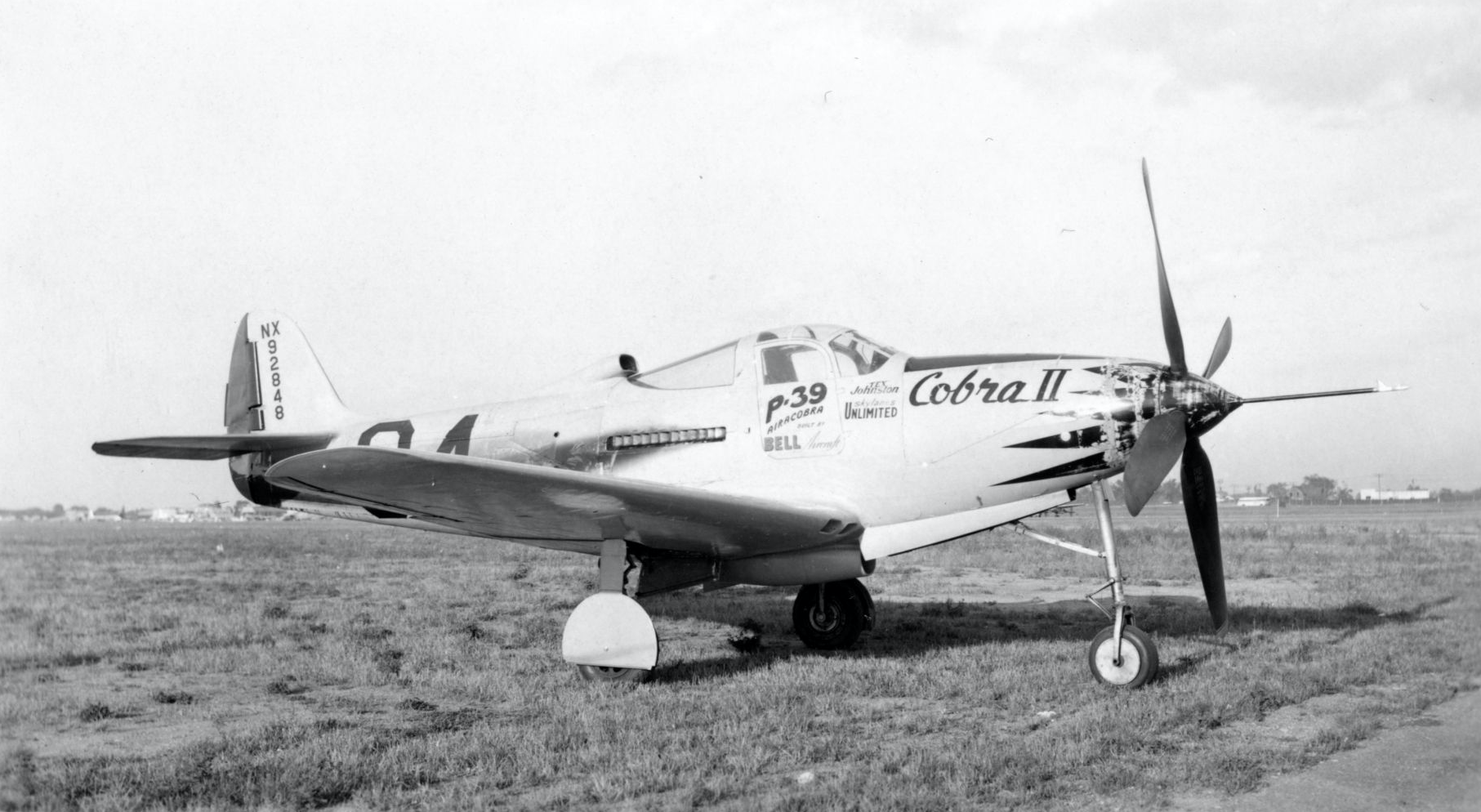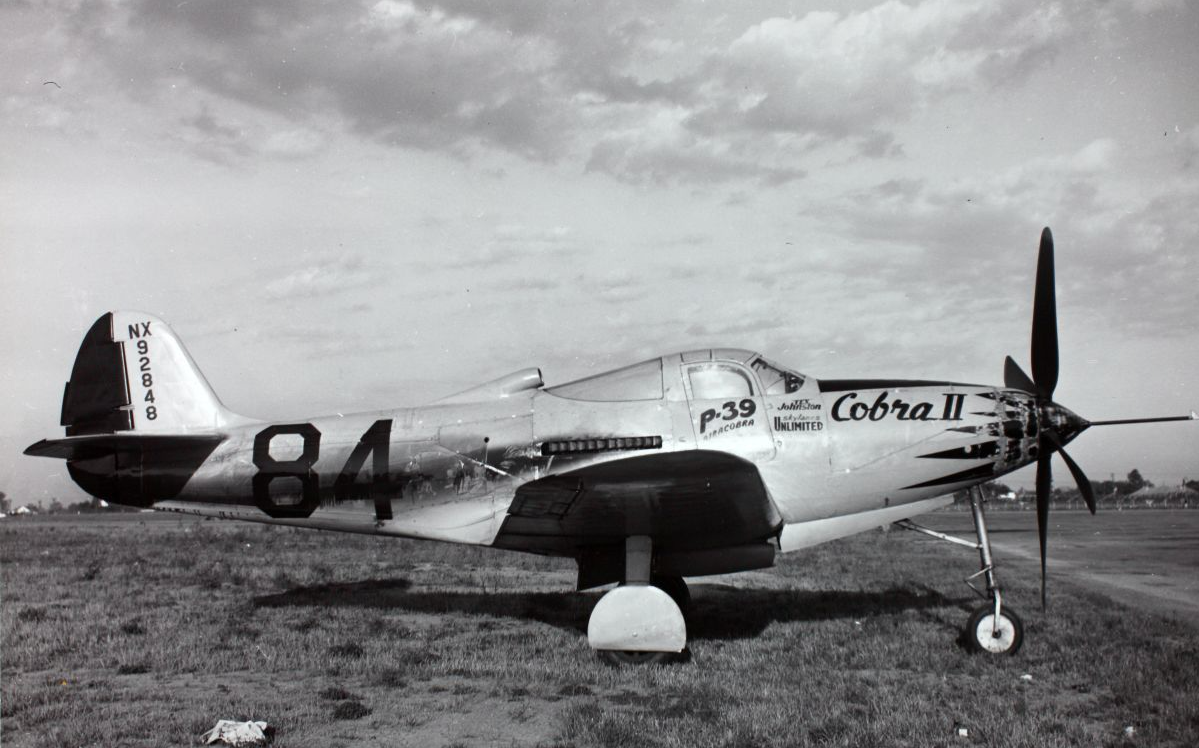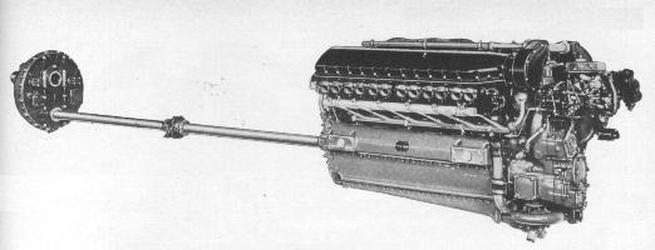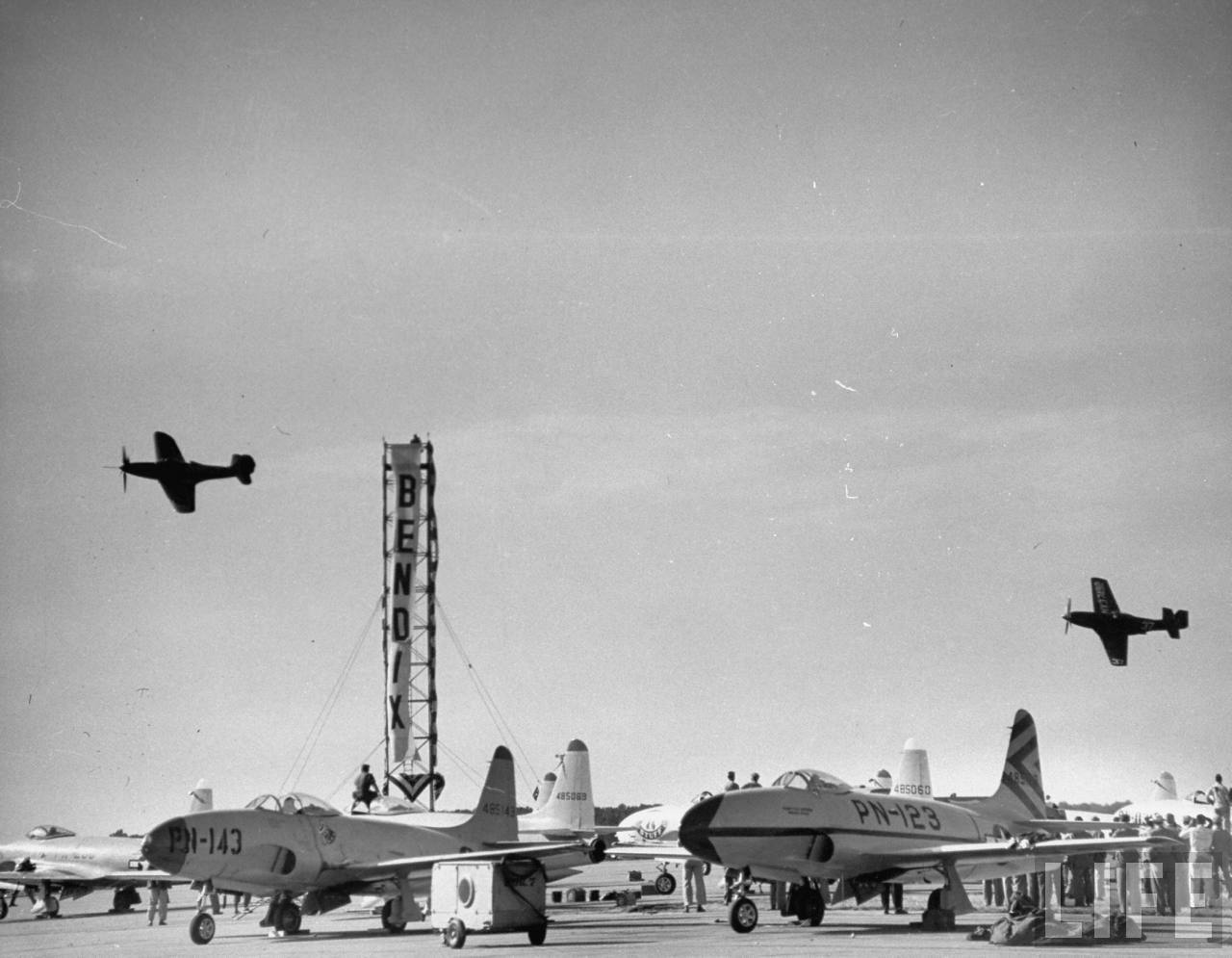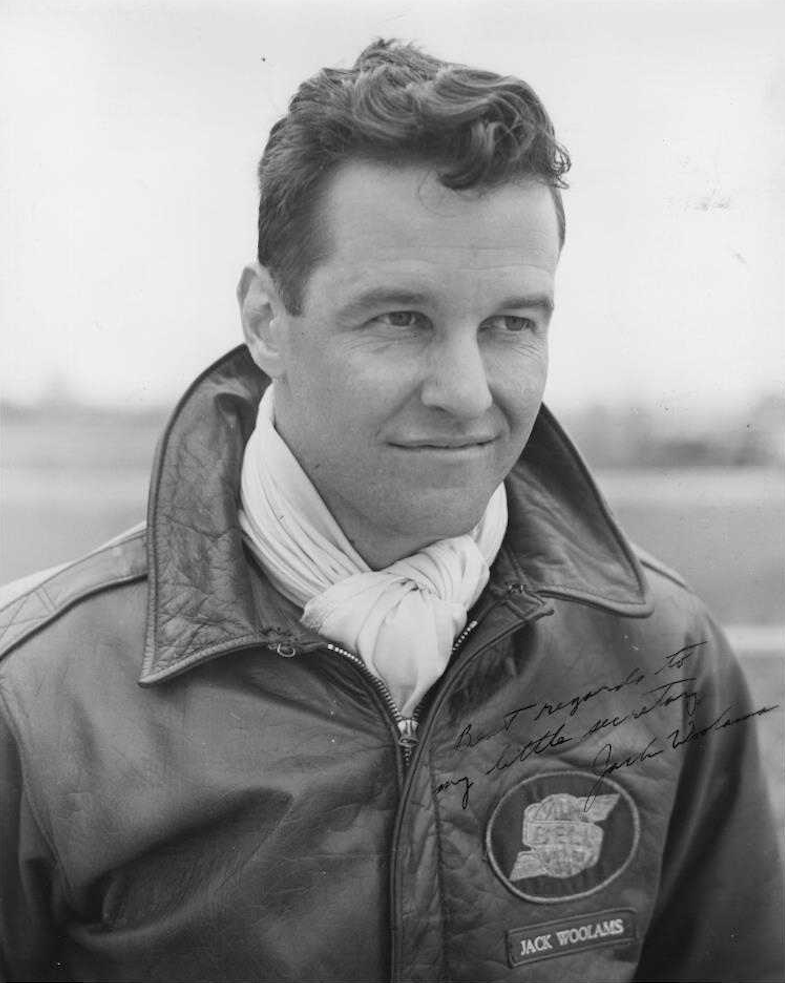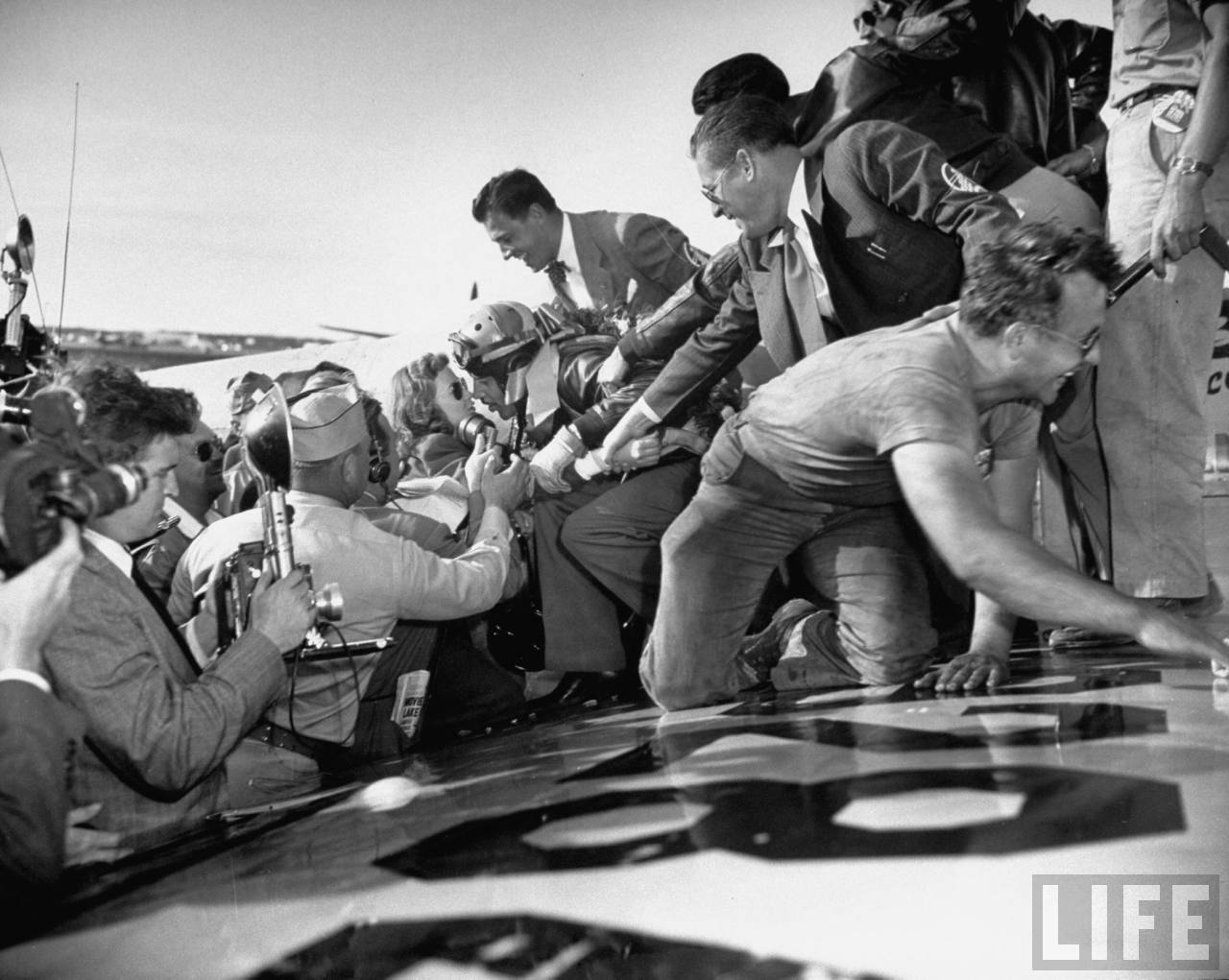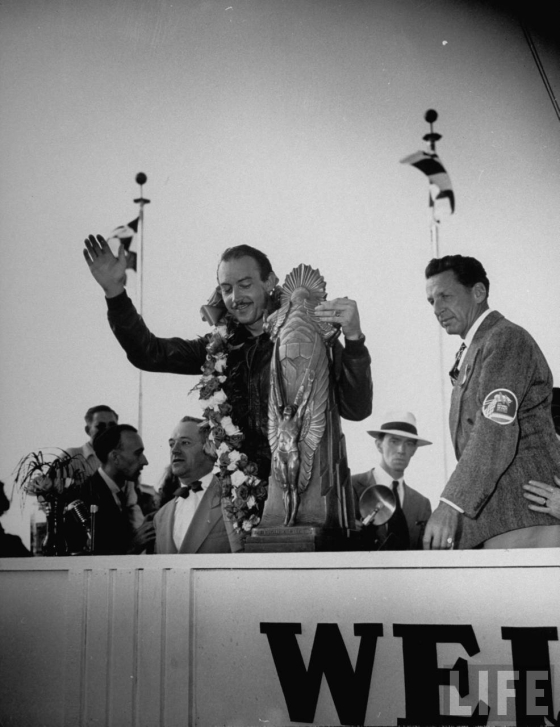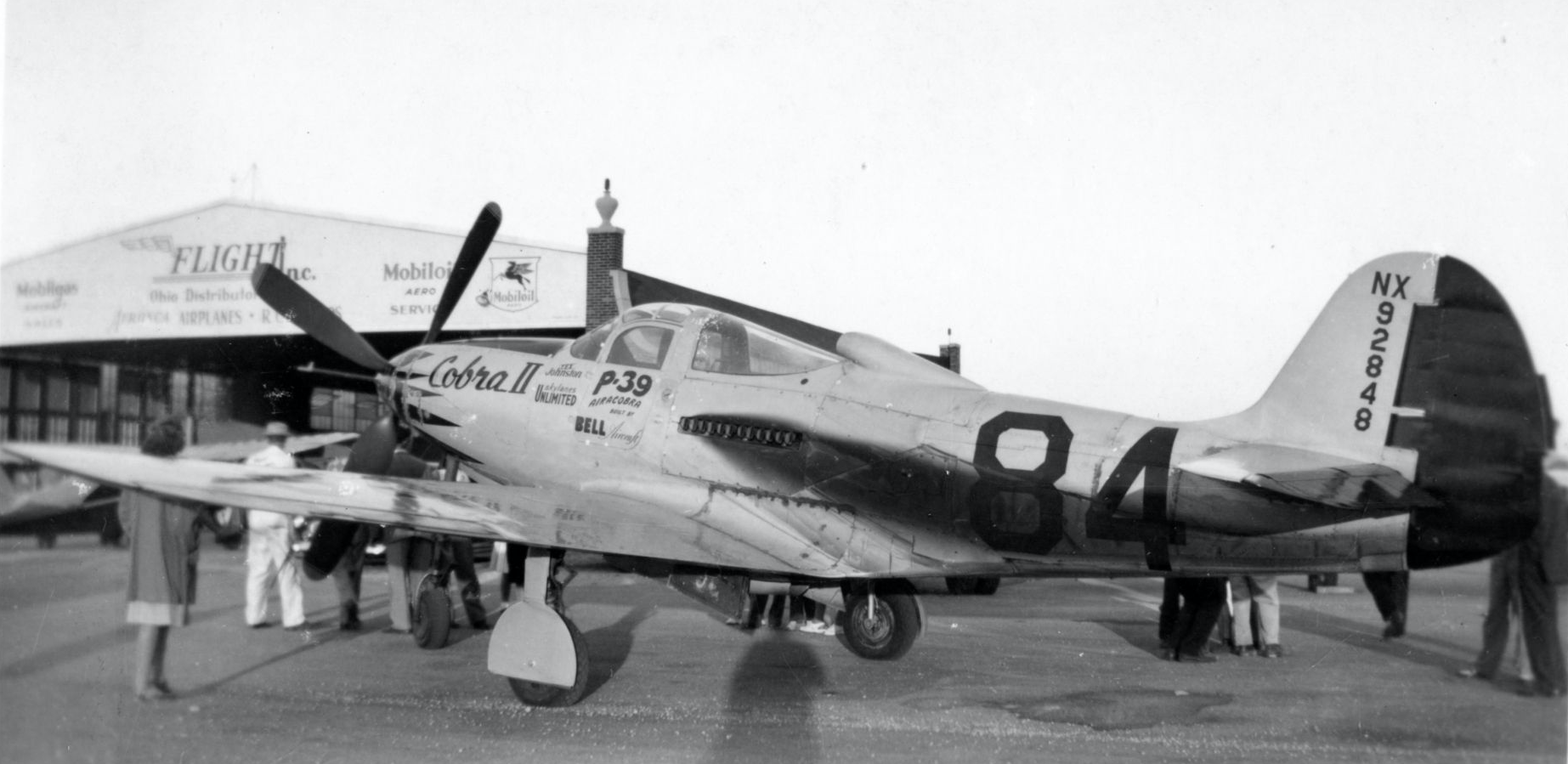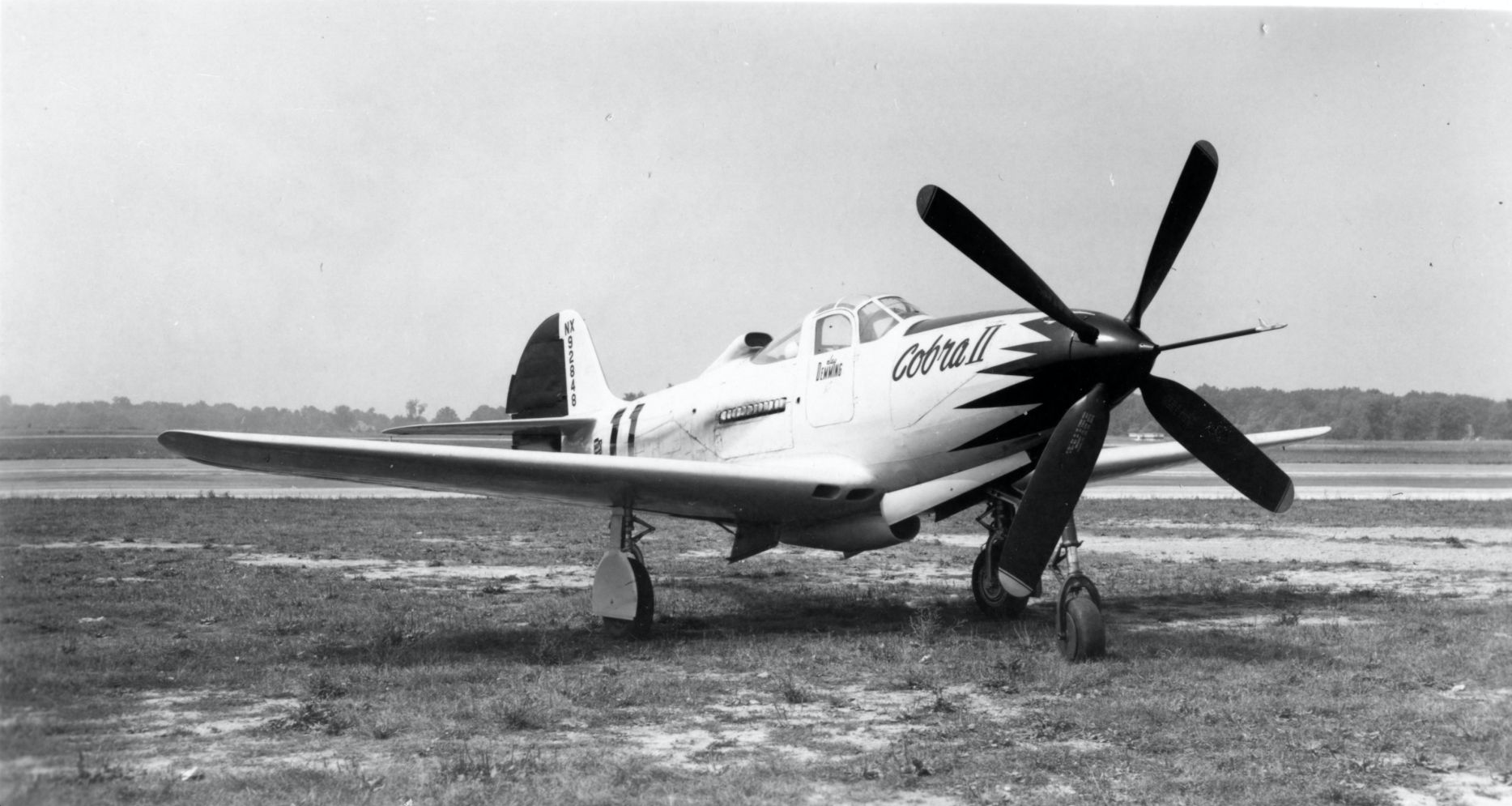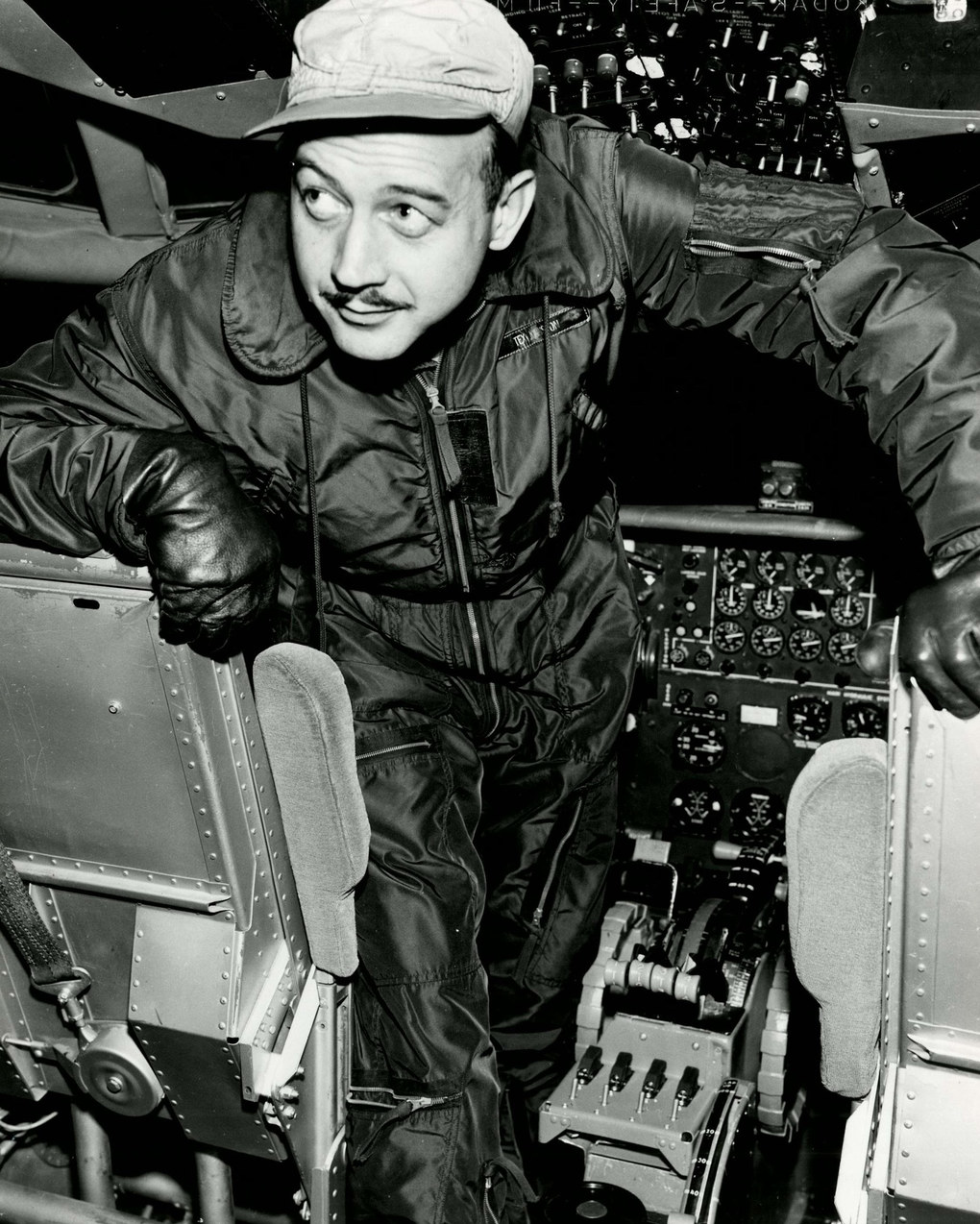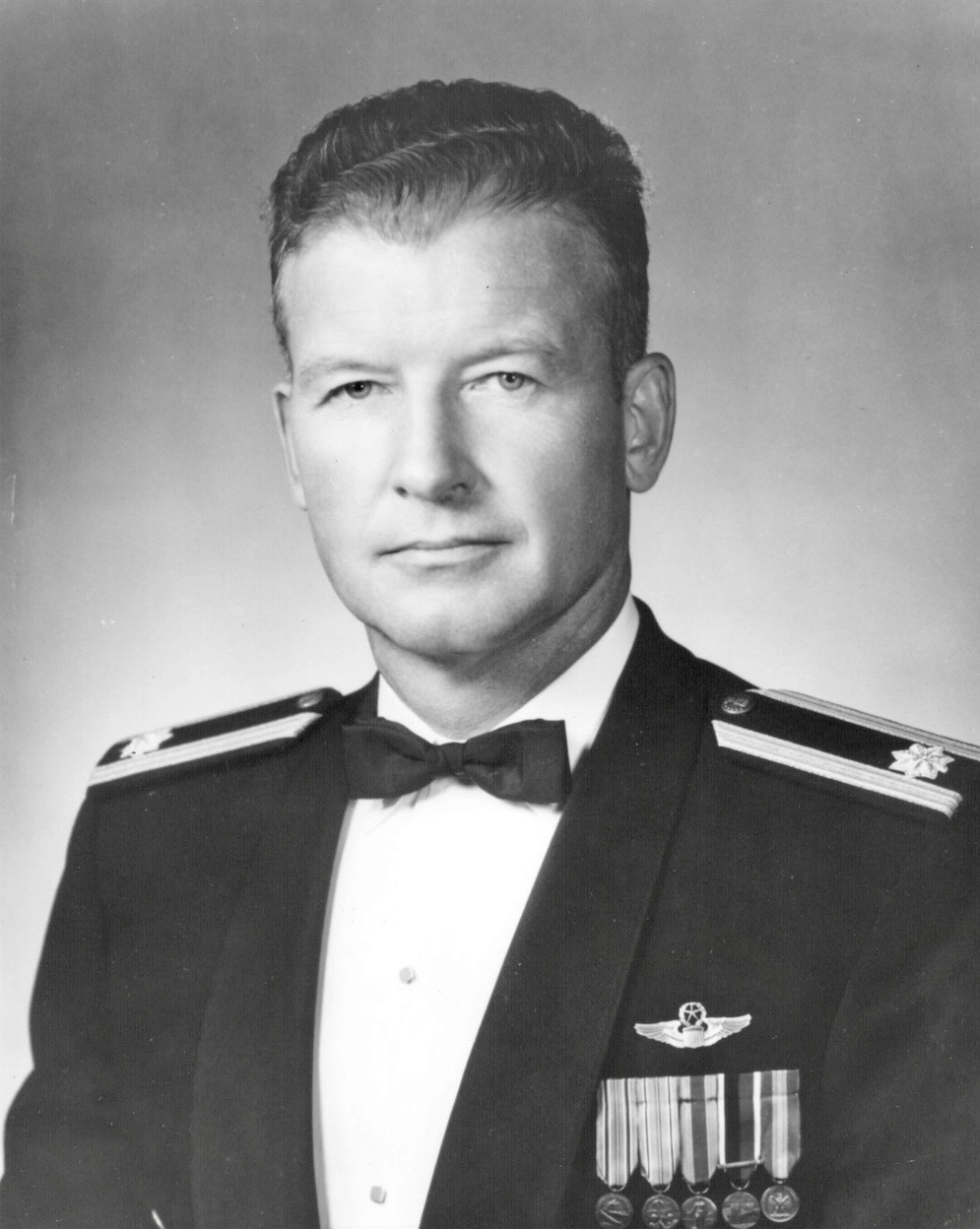
1 September 1968: Two U.S. Air Force McDonnell F-4D Phantom II fighters were on a pre-dawn strike against the Ho Chi Minh Trail, near the Ban Karai Pass. Both Phantoms, call signs CARTER 01 and CARTER 02, were hit by anti-aircraft gunfire and their crews had to eject. Both pilots from CARTER 01 were quickly picked up, but the aircraft commander of CARTER 02 was hidden by the jungle. The Weapons System Officer was never seen again.
A Combat Search and Rescue (CSAR) mission was immediately sent out to locate and rescue the missing airmen. Two Sikorsky HH-3 Jolly Green Giant helicopters, the recovery team, were escorted by four Douglas A-1 Skyraiders to help in the search and to suppress any enemy gunfire that was trying to shoot down the rescue helicopters.
The Skyraider was a Korean War era carrier-based attack airplane originally in service with the U.S. Navy. It had been replaced by modern jet aircraft, but the Air Force found that its slow flight and ability to carry a heavy fuel and weapons load were ideal for the CSAR escort mission.
The four Skyraiders were from the 602nd Special Operations Squadron at Nakhom Phanom, Thailand. They operated with the call sign SANDY. Lieutenant Colonel William A. Jones III, the squadron commanding officer, on his 98th combat mission, was the on-scene commander flying SANDY 01, an A-1H, serial number 52-139738.
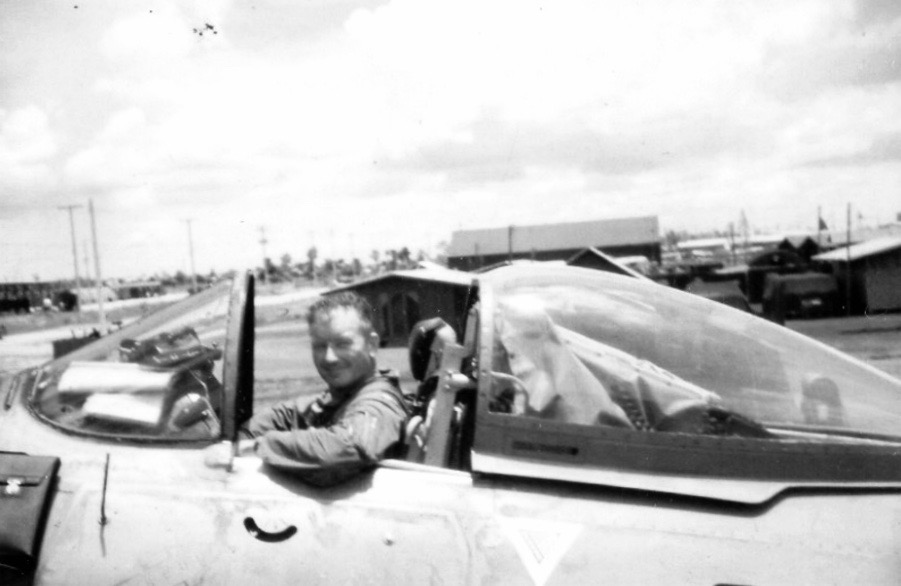
MEDAL OF HONOR
JONES, WILLIAM A., III
Rank and organization: Colonel, U.S. Air Force, 602d Special Operations Squadron, Nakon Phanom Royal Thai Air Force Base, Thailand
Place and date: Near Dong Hoi, North Vietnam, 1 September 1968
Entered service at: Charlottesville, Virginia
Born: 31 May 1922, Norfolk, Virginia
Citation: For conspicuous gallantry and intrepidity in action at the risk of his life above and beyond the call of duty. Col Jones distinguished himself as the pilot of an A-1H Skyraider aircraft near Dong Hoi, North Vietnam. On that day, as the on-scene commander in the attempted rescue of a downed U.S. pilot, Col. Jones aircraft was repeatedly hit by heavy and accurate antiaircraft fire. On 1 of his low passes, Col. Jones felt an explosion beneath his aircraft and his cockpit rapidly filled with smoke. With complete disregard of the possibility that his aircraft might still be burning, he unhesitatingly continued his search for the downed pilot. On this pass, he sighted the survivor and a multiple-barrel gun position firing at him from near the top of a karst formation. He could not attack the gun position on that pass for fear he would endanger the downed pilot. Leaving himself exposed to the gun position, Col. Jones attacked the position with cannon and rocket fire on 2 successive passes. On his second pass, the aircraft was hit with multiple rounds of automatic weapons fire. One round impacted the Yankee Extraction System rocket mounted directly behind the headrest, igniting the rocket. His aircraft was observed to burst into flames in the center fuselage section, with flame engulfing the cockpit area. He pulled the extraction handle, jettisoning the canopy. The influx of fresh air made the fire burn with greater intensity for a few moments, but since the rocket motor had already burned, the extraction system did not pull Col. Jones from the aircraft. Despite searing pains from severe burns sustained on his arms, hand, neck, shoulders, and face, Col. Jones pulled his aircraft into a climb and attempted to transmit the location of the downed pilot and the enemy gun position to the other aircraft in the area. His calls were blocked by other aircraft transmissions repeatedly directing him to bail out and within seconds his transmitters were disabled and he could receive only on 1 channel. Completely disregarding his injuries, he elected to fly his crippled aircraft back to his base and pass on essential information for the rescue rather than bail out. Col. Jones successfully landed his heavily damaged aircraft and passed the information to a debriefing officer while on the operating table. As a result of his heroic actions and complete disregard for his personal safety, the downed pilot was rescued later in the day. Col. Jones’ profound concern for his fellow man at the risk of his life, above and beyond the call of duty, are in keeping with the highest traditions of the U.S. Air Force and reflect great credit upon himself and the Armed Forces of this country.
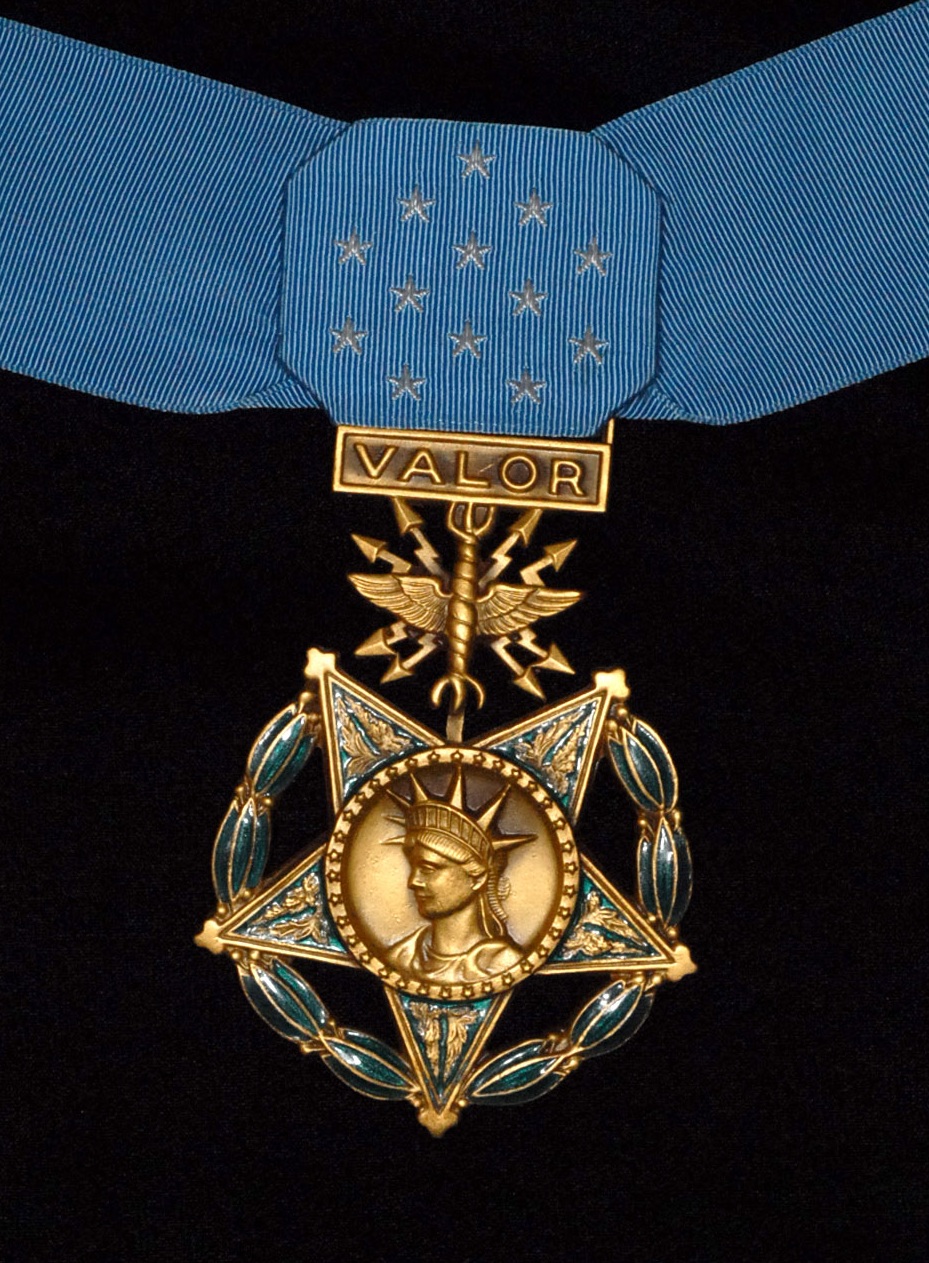
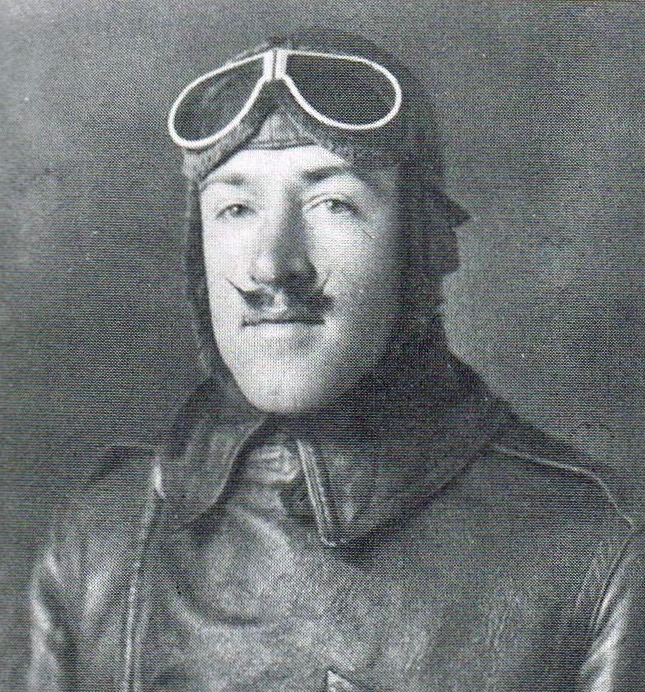
William Atkinson Jones III was born 31 May 1922 at Norfolk, Virginia. He was the son of William Atkinson Jones, Jr., an attorney in general practice, and Elizabeth Goodwin Hart Jones, a school teacher. Mr. Jones had served as a pilot in the Signal Corps, United States Army, during World War I. The Jones family had lived in Warsaw, Virginia, since the 1840s.
When his parents divorced in 1929, Bill and his mother relocated to Charlottesville, Virginia. Jones attended Lane High School in Charlottesville, where he was a member of the literary society, and played on the varsity football and basketball teams.
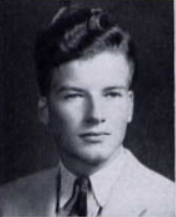
Following his graduation from high school, Jones studied at the University of Virginia, which was also in Charlottesville. He was captain of the university’s fencing team, and a member of the Sigma Phi Epsilon (ΣΦΕ) fraternity. Jones graduated in 1942 at the age of 19 years, with a Bachelor of Arts degree.
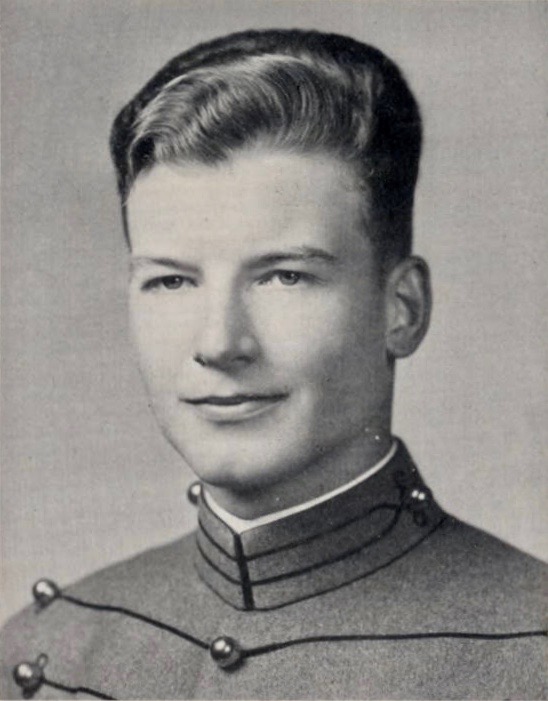
Already a university graduate, William Atkinson Jones III was appointed a cadet at the United States Military Academy, West Point, New York. He entered West Point on 1 July 1942, as a member of the Class of 1945. along with academics and military training, Cadet Jones was a member of the Army Fencing Squad.
Bill Jones graduated from West Point with a Bachelor of Science degree. On 5 June 1945, he was commissioned a second lieutenant, Air Corps, United States Army.
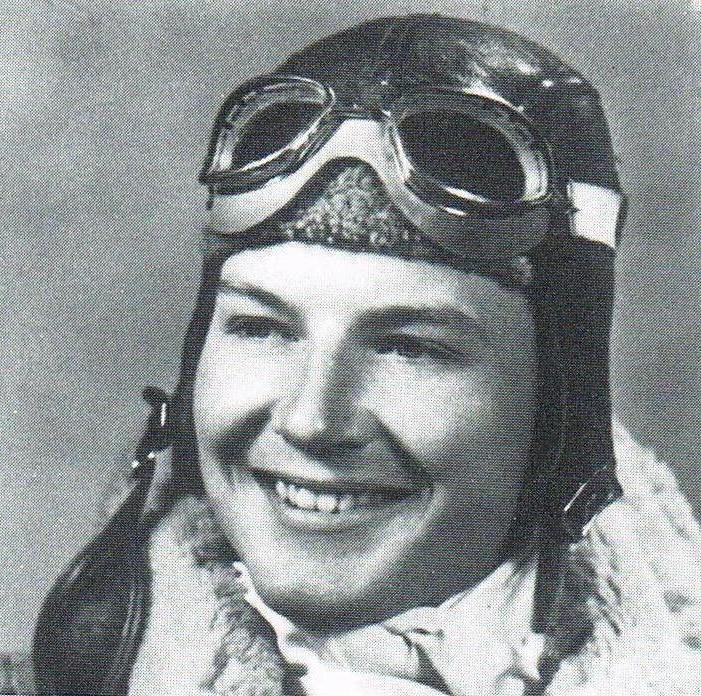
Lieutenant Jones was trained as a pilot at several locations around the United States, including Oklahoma, New York, and Arizona. Lieutenant Jones served as a fighter pilot, stationed in the Philippine Islands, 1946–1948. Returning to the United States, Jones was assigned as a transport pilot based at Biggs Air Force Base, Fort Bliss Texas.
On 20 October 1948, Lieutenant Jones married Miss Lois Marie McGregor at Bisbee, Arizona, her home town. The ceremony was officiated by Reverend John L. Howard. They would have three daughters, Anne, Elizabeth and Mary Lee.

In 1952, Jones was assigned as a Fairchild C-119 Flying Boxcar pilot with the 317th Troop Carrier Wing at Rhein-Main Air Base, Federal Republic of Germany (West Germany). He remained in Europe for the next four years.
In 1956 Jones transitioned to bombers, training as an aircraft commander in the Boeing B-47E Stratojet. He was stationed at Lake Charles Air Force Base, Louisiana, and Pease Air Force Base, New Hampshire.
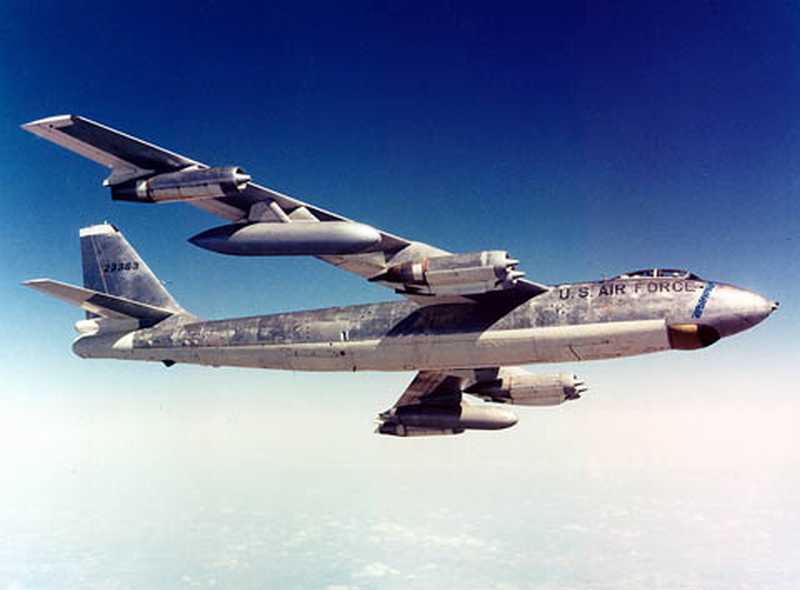
Jones attended the Air War College at Maxwell Air Force Base, Montgomery, Alabama, 1965–1966. He earned a master’s degree in international affairs. His next assignment was as a staff officer at The Pentagon.
In 1968, Major Jones requested a transfer to the Douglas A-1 Skyraider training course at Hurlburt Field, in Florida. On completion, he was assigned as the commanding officer of the 602nd Special Operations Squadron at Nakhon Phanom Royal Thai Navy Base, Thailand.
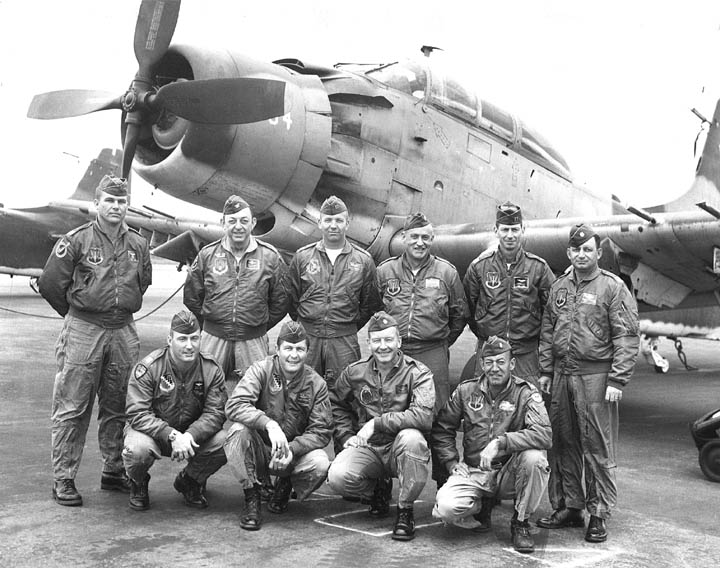
Lieutenant Colonel Jones was severely burned during the rescue mission of 1 September 1968. He was transported back to the United States for extensive medical treatment at Fort Sam Houston, San Antonio, Texas.
Bill Jones was promoted to the rank of colonel, 1 November 1969. One 14 November, President Richard M. Nixon approved the award of the Medal of Honor to Colonel Jones.
On 15 November 1969, Colonel Jones was flying his personal airplane, a Piper PA-20 Pacer, N7015K. The Pacer was a small, 4-place, single-engine light airplane. At 12:55 p.m., he took off from Woodbridge Airport (W22), a small, uncontrolled airport about 12 miles (19 kilometers) southwest of Washington, D.C.
Immediately after takeoff, Colonel Jones radioed that he was returning to the airport. The airplane was seen in a left turn with a nose down attitude. It crashed off the airport and caught fire. Colonel Jones suffered third degree burns over his entire body an died immediately.
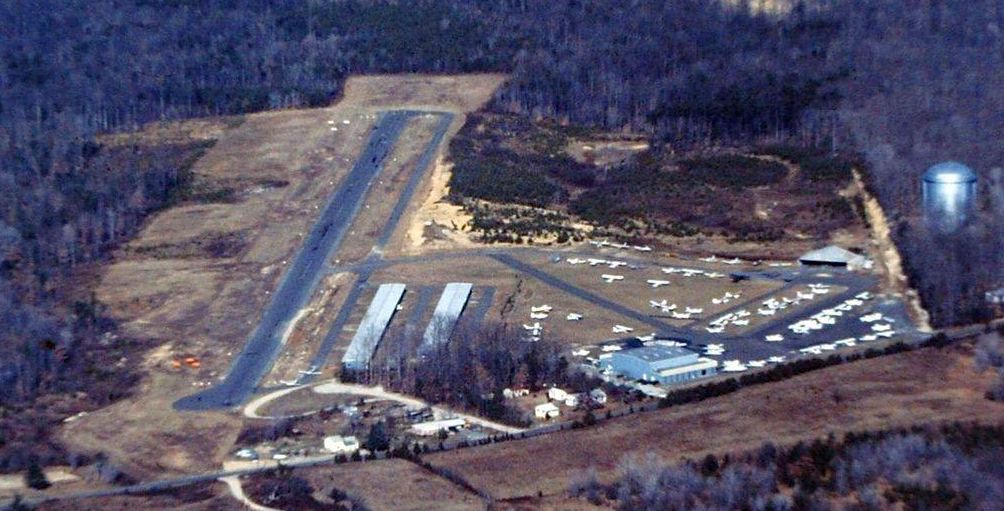
The NTSB accident report listed the Probable Cause as a complete engine failure for unknown causes, followed by a loss of control by the pilot, the cause also undetermined. (Some sources suggest that the Pacer struck wires while returning to the runway.)
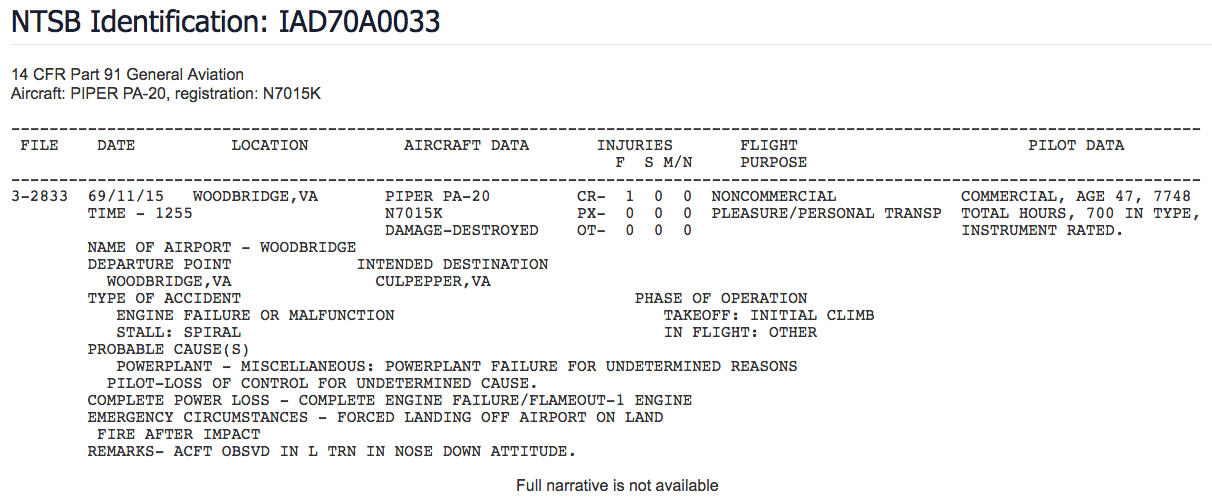 At the time of his death, Colonel Jones had flown a total of 7,748 hours.
At the time of his death, Colonel Jones had flown a total of 7,748 hours.
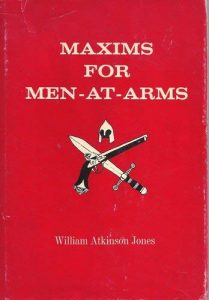 Colonel Jones was the author of Maxims for Men-at-Arms, published by Dorrance and Co., Philadelphia, 1969.
Colonel Jones was the author of Maxims for Men-at-Arms, published by Dorrance and Co., Philadelphia, 1969.
President Nixon presented the Medal of Honor to Colonel Jones widow in a ceremony at the White House, 6 August 1970. At the award ceremony, Miss Mary Jones, Colonel Jones’ youngest daughter, gave a copy of her father’s book to the president.
Colonel William AtkinsonsJones III, United States Air Force, was buried at St. John’s Episcopal Cemetery in Warsaw, Virginia.
The William A. Jones III Auditorium of Anderson Hall at the Air War College, Maxwell Air Force Base, was named in his honor.
In 2011, The William A. Jones III Building at Joint Base Andrews, Maryland, (just south east of Washington, D.C.) was also named in honor of Colonel Jones.
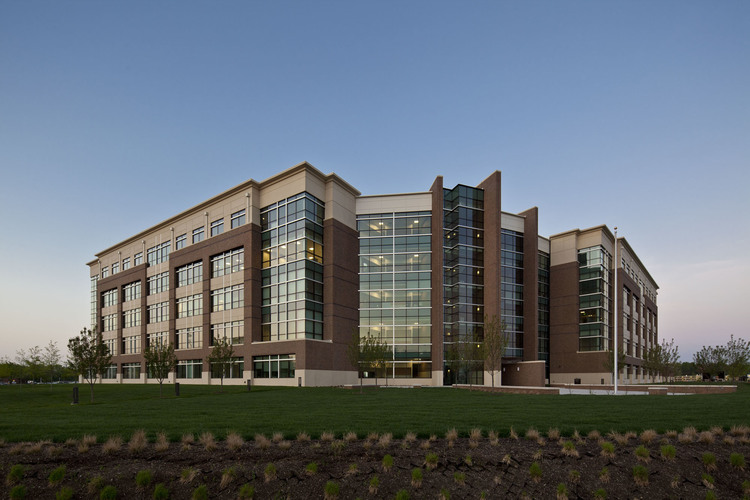
The United States Navy and Marine Corps adopted the Douglas Aircraft Company AD-1 Skyraider just after the end of World War II. The U.S. Air Force recognized its value as a close air support attack bomber, but it wasn’t until the early months of U.S. involvement in the Vietnam War that a number of Skyraiders were transferred to the U.S.A.F.
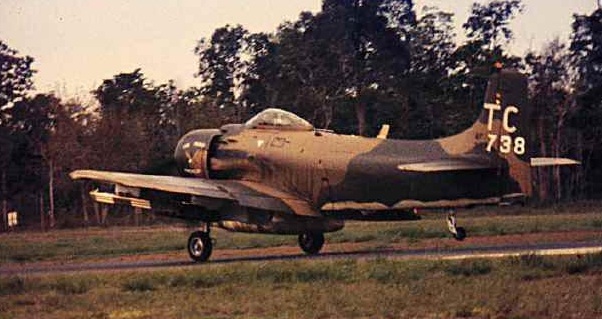
These aircraft were identified by Department of the Navy, Bureau of Aeronautics serial numbers, commonly referred to as “bureau numbers,” or “bu. no.” Once acquired by the Air Force, the two-digit fiscal year number in which the airplane was contracted was added to the bureau number, resulting in a serial number with a format similar to a standard U.S.A.F. serial number. For example, Lieutenant Colonel Jones’ Skyraider, A-1H 52-139738, was originally U.S. Navy AD-6 Skyraider Bu. No. 139738, authorized in 1952. (The Douglas AD series was redesignated A-1 in 1962.)
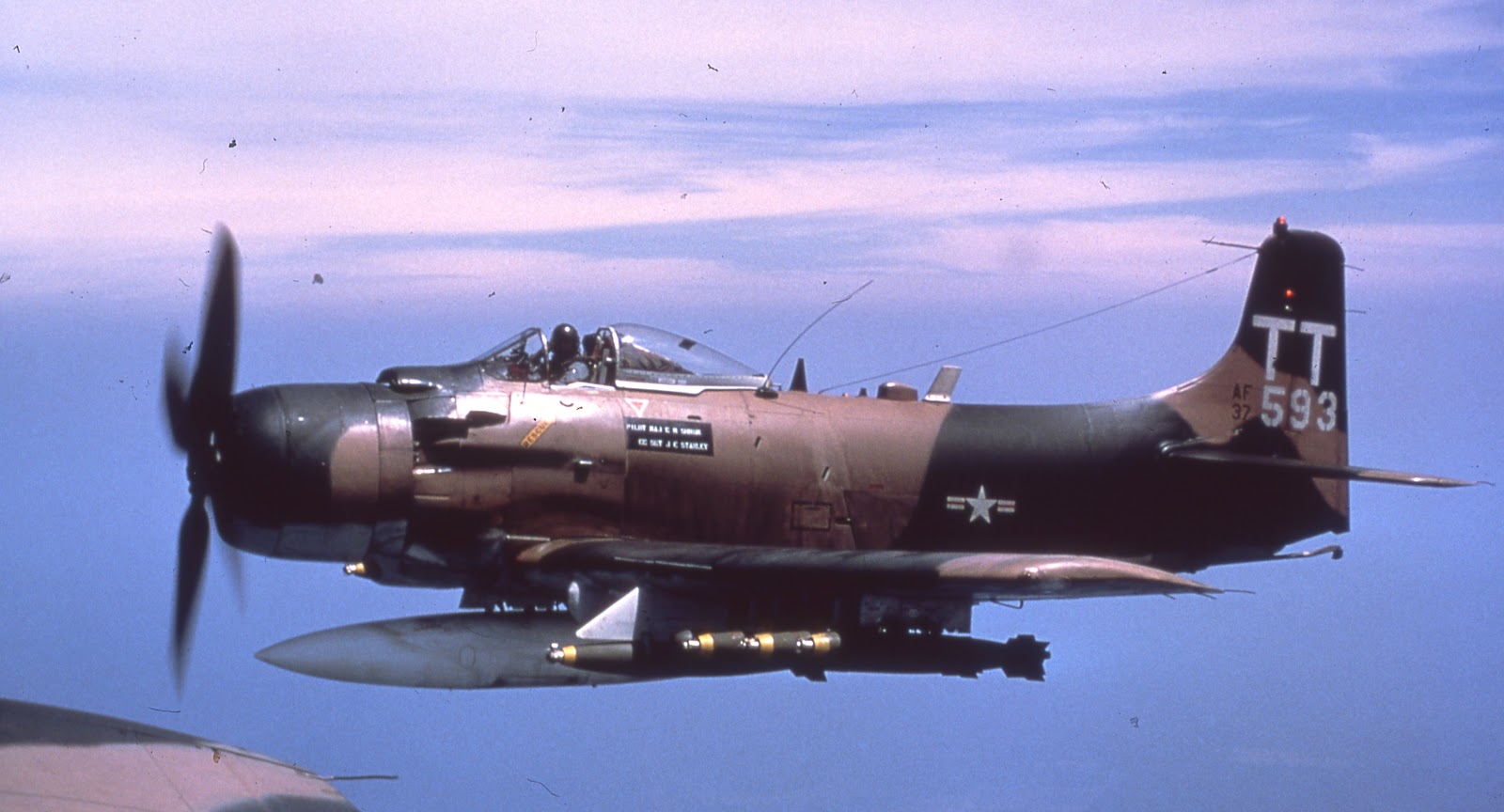
The Douglas AD-6 (A-1H) Skyraider was a single-place, single-engine attack aircraft. A low-wing monoplane with conventional landing gear, it had folding wings for storage aboard aircraft carriers. The A-1H Skyraider was 39 feet, 3 inches (11.963 meters) long with a wingspan of 50 feet, ¼ inch (15.246 meters) and overall height of 15 feet, 8 inches (4.775 meters). The total wing area was 400 square feet (37.16 square meters). Its had an empty weight of 12,072 pounds (5,476 kilograms) and its maximum takeoff weight was 25,000 pounds (11,340 kilograms).
The A-1H was powered by an air-cooled, supercharged, direct-fuel-injected, 3,347.66-cubic-inch-displacement (54.858 liter) Wright Aeronautical Division R-3350-26WA Duplex-Cyclone (Cyclone 18 836C18CA1) engine. This was a twin-row 18-cylinder radial, with a compression ratio of 6.7:1 and water/alcohol injection. This engine had a normal power rating at Sea Level of 2,300 horsepower at 2,600 r.p.m., and 2,700 horsepower at 2,900 r.p.m. to for take off. 115/145-octane aviation gasoline was required. The engine drove a four-bladed Aeroproducts constant-speed propeller 13 foot, 6 inch (4.115 meters) diameter, through a 0.4375:1 gear reduction. The R-3350-26WA was 4 feet, 7.62 inches (1.413 meters) in diameter and 6 feet, 6.81 inches (2.002 meters) long. It weighs 2,848 pounds (1,292 kilograms), dry.
The A-1H Skyraider had a cruise speed of 164 knots (189 miles per hour/304 kilometers per hour) and a maximum speed of 297 knots (342 miles per hour/550 kilometers per hour) at 15,400 feet (4,694 meters). The A-1H could climb to 20,000 feet (6,096 meters) in 9.5 minutes. The ceiling was 31,900 feet (9,723 meters). Carrying a 2,000 pound (907 kilogram) bomb load, its combat radius was 260 nautical miles (299 statute miles/482 kilometers).
The A-1H was armed with four 20 mm M3 autocannon with 200 rounds of ammunition per gun. The Skyraider could carry a combination of external fuel tanks, gun pods, bombs or rockets on 15 hardpoints.
Douglas built 713 AD-6 Skyraiders at Santa Monica, California.
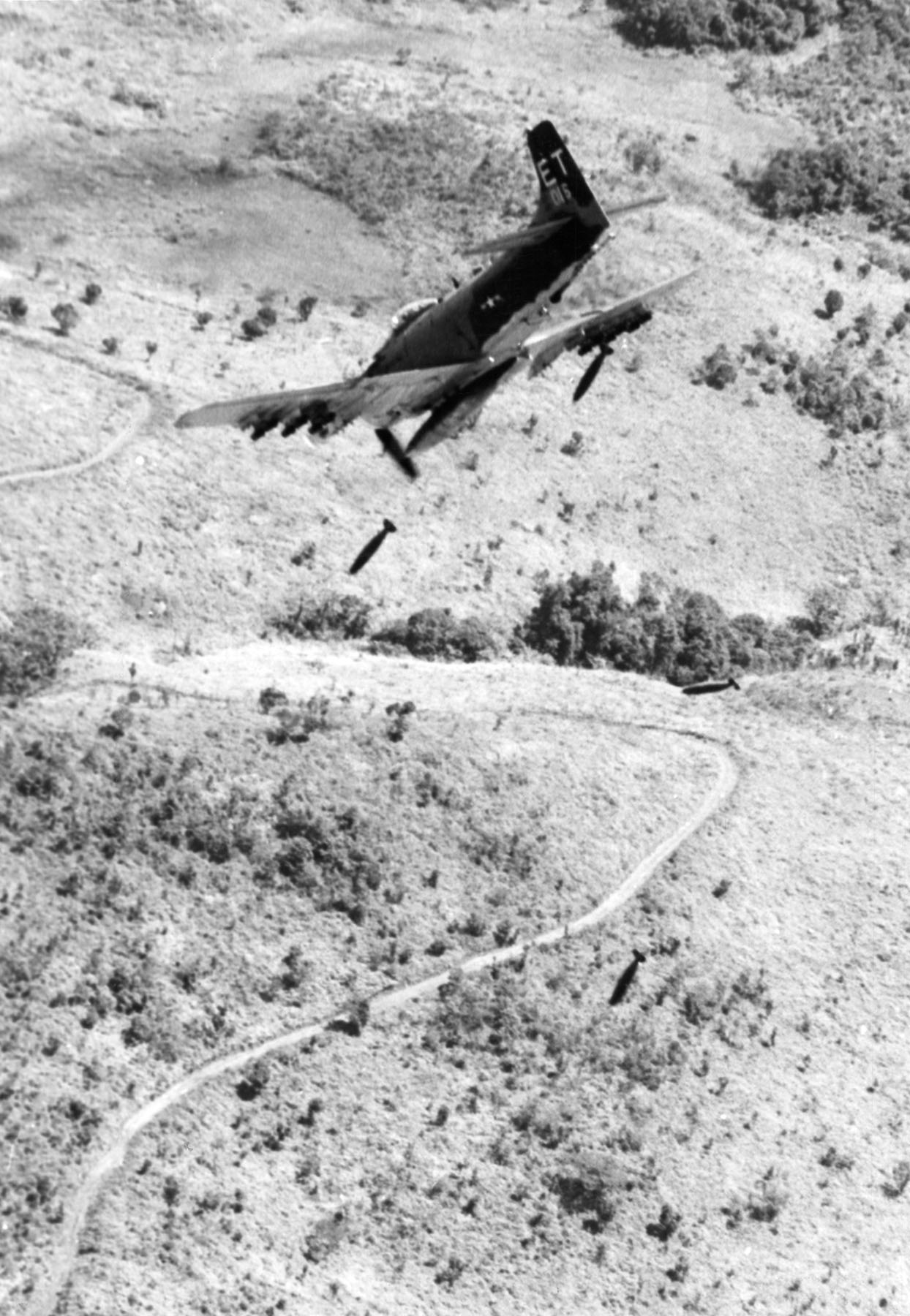
© 2018, Bryan R. Swopes
